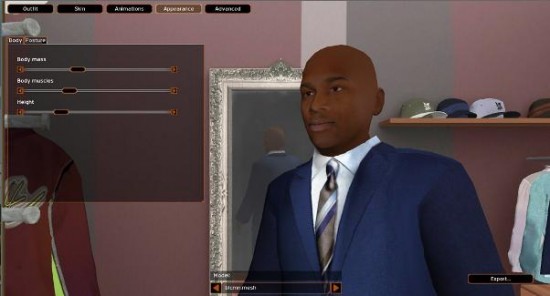The lack of mesh imports has long been a problem for enterprise users of OpenSim and Second Life. But Second Life is about to start open beta testing of mesh — and OpenSim won’t be far behind.
According to OpenSim core developer Justin Clark-Casey, the OpenSim team will adapt the OpenSim server software to work with Second Life-style mesh support.
Clark-Casey is the guy who recently finished OpenSim support for media-on-a-prim, which Second Life added in the spring along with its Second Life Viewer 2 release.
“It’s another interesting development,” he told Hypergrid Business. “I think that we’re slowly getting the basic features in place — simultaneous users, prim building, permissions, media on a prim, mesh, etc. — to make virtual environments useful for a great diversity of applications.”
Technically, of course, OpenSim has had mesh for over a year. The ModreX module for OpenSim was released by the realXtend team back in June of 2009. RealXtend is a branch of OpenSim. In addition to building a version of the software that supports full meshes, realXtend also has its own viewer to display virtual environments with meshes in them, called Naali.
However, this platform hasn’t seen widespread adoption since it’s not compatible with Second Life, where most OpenSim users start out. There are no public grids running on the platform. It has been getting some use from architects, however, who can use it to import their building designs from their architectural modeling software.
Clark-Casey couldn’t say whether ModreX will be compatible with Second Life’s mesh implementation.
“I believe that the [Second Life] internal format will likely be different,” he said. “I’m not sure how easy it would be to convert between the two.”
However, both Second Life and ModreX support the import of Collada-standard mesh files. Collada is a 3D file format supported by most professional 3D design packages.
Meshes can also be useful for manufacturers who need to import files from computer aided design systems.
Advantages of meshes go beyond importing buildings and widget prototypes. They would also allow more realistic avatars, clothing, and hair.

Why is this important for business? Here are a few reasons:
- When we see our avatars doing something, and we identify with those avatars, that can affect our behavior. For example, a recent study showed that people who saw their avatars exercise got more exercise themselves afterward than people who saw an avatar who didn’t resemble them. A business equivalent might be having employees practice job skills inside simulated environments — running machinery, or interacting patiently with customers.
- People identify with their avatars, and act accordingly. If their avatar is tall, they are more aggressive in negotiations. If their avatar is attractive, they are more outgoing. In fact, this effect continues even into the real world, after people leave the virtual environment.
- The painted-on effect of much current business clothing in Second Life and OpenSim can be distracting — and can create inappropriate impression. For example, if I meet a man in a skin-tight business suit in real life, I might speculate that he is shallow, or gay, or shallow and gay — not that there’s anything wrong with that — and be distracted from his presentation about, say, the latest algorithmic trading technology. Yes, I know that there are people out there who don’t get distracted by super-tight clothing and pay attention to the substance of what people say, instead. But I’m not one of those saints. If the man or woman in front of me is wearing a shirt that looks as if its been sprayed on — or just left a wet T-shirt contest — my mind will have a harder time focusing on work.
Meshes also have the potential of allowing very realistic environments, without the burden on servers that creating the same environment using prims would cause.
Finally, meshes would allow enterprises to purchase three dimensional content from a much wider variety of sources. Today, content for Second Life and OpenSim worlds can only be generated by designers familiar with those platforms. But there is a wide universe out there of designers, architects and artists who are more familiar with professional 3D design tools like Maya and 3D Studio Max — not to mention the 3D mesh objects available directly from manufacturers, or Google’s free repository of mesh objects, Google 3D Warehouse.
Another application of mesh imports is for digital animation, as the video below from SandCastle Studios demonstrates.
Second Life and OpenSim are great platforms for making corporate training videos. It’s both faster and cheaper than either traditional animation or live-action filming, and mesh imports will allow for much richer and more realistic animations.
Second Life currently has an advantage over OpenSim as a platform for this kind of animation, known as machinima, because you don’t have to build everything from scratch in Second Life – you can buy pre-made costumes and props, and buy or rent sets. However, as the amount of content available in OpenSim continues to grow, OpenSim is likely to gain the upper hand because of dramatically lower land costs and the ability to make full region backups, enabling machinimators to save their virtual sets for later re-use.
- Kitely Mega Worlds on sale for $90 per month - July 19, 2024
- OpenSim regions up, actives down with summer heat - July 15, 2024
- People think AIs are conscious. What could this mean for bots in OpenSim? - July 12, 2024
